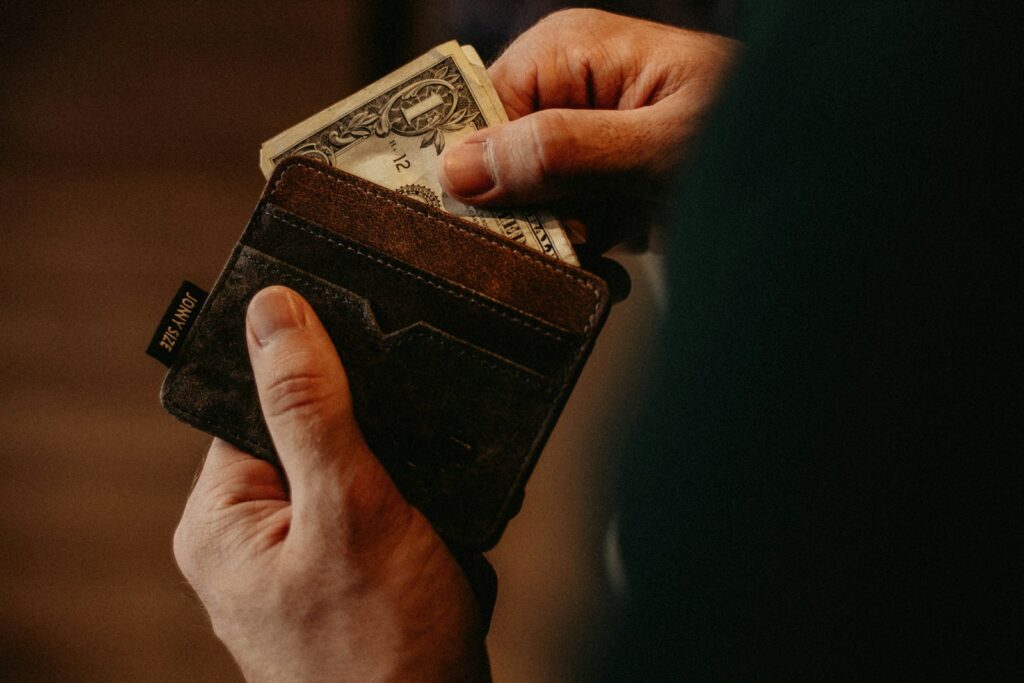Warning about the tactic of impersonating law enforcement agencies, the police help victims recover money lost to fraud to seize assets
The scammers do not stop at seizing assets but continue to exploit the victims’ trust to carry out the next scam in the form of “supporting the recovery of scammed money.” This activity is becoming increasingly common.
People just need to go to search engines and look up the keyword “get back scammed money,” and hundreds of search results will appear. The methods of these individuals are as follows: They set up many pages and groups impersonating police units and Vietnamese law firms to assist victims of online scams.
To reach more people, they conduct advertising campaigns and posts such as: “accepting applications,” “supporting the retrieval of frozen funds,” “recovering scam money,” “recovering frozen money on e-commerce platforms,” “recovering frozen money without a deposit”… on social media groups, under the posts, there are a series of comments like “got my scam money back,” “thank you”… but in reality, they are all fake information, luring in “prey.”
Exploiting the psychology of those who have been scammed and want to recover their lost money, the perpetrators claim they will assist in recovering the stolen funds with a quick process, promising to get the money back. To recover the stolen money, the perpetrators require the victims to pay various fees and then embezzle the funds.
Scammers are very sophisticated, using images and information from police units, law firms, and legal offices… and posting many videos and articles warning about methods and tricks of property theft scams; they edit statements from some lawyers and police officers to create trust among the public.
When a citizen proactively contacts them, the perpetrators will ask the citizen to provide personal information and details about the scam incident; install and download other applications like Zalo, Telegram… for easier communication and request the citizen to transfer money to complete procedures and paperwork.
They even use photo and text editing software to create fake documents to make people believe that their applications have been received and processed. Then they will come up with various excuses, such as needing more money for the application to be processed, the application lacking information, or system errors, to request that people continue to transfer larger amounts of money in order to commit fraud.
To prevent the above tricks, the public needs to adhere to the following guidelines: Absolutely do not listen to or contact websites, fanpages, or social media accounts advertising services such as “receiving applications,” “supporting the retrieval of frozen money,” “recovering scam money,” etc., on the internet; do not transfer money to these entities to complete applications for retrieval or recovery of frozen or scam money.
When detecting cases that show signs of fraud, citizens need to promptly report to the police to resolve the matter according to the law. Do not turn to social media pages that claim they can recover your lost money, as you might fall into the trap of scammers.

Cảnh báo thủ đoạn giả danh cơ quan pháp luật, Công an giúp nạn nhân thu hồi tiền bị lừa để chiếm đoạt tài sản
Các đối tượng lừa đảo không chỉ dừng lại ở việc chiếm đoạt tài sản mà còn tiếp tục lợi dụng lòng tin của nạn nhân để thực hiện hành vi lừa đảo lần tiếp theo bằng hình thức lừa đảo “hỗ trợ lấy lại tiền bị lừa đảo”, hoạt động này xuất hiện ngày càng nhiều.
Người dân chỉ cần lên các trang mạng tìm kiếm từ khóa “lấy lại tiền bị lừa đảo” thì sẽ hiện lên hàng trăm kết quả tìm kiếm. Thủ đoạn của các đối tượng như sau: Chúng lập ra nhiều trang, nhóm giả danh các đơn vị Công an, công ty luật Việt Nam để hỗ trợ giúp đỡ nạn nhân bị lừa đảo qua mạng. Để có nhiều người tiếp cận, chúng thực hiện chiến dịch quảng cáo, bài viết như: “tiếp nhận hồ sơ”, “hỗ trợ lấy lại tiền bị treo”, “thu hồi tiền lừa đảo”, “thu hồi tiền treo trên sàn thương mại điện tử”, “thu hồi tiền treo không cần cọc”… trên các hội, nhóm mạng xã hội, phía dưới các bài đăng là hàng loạt các tin nhắn bình luận “đã lấy lại được tiền lừa đảo”, “cảm ơn”… nhưng thực chất đều là thông tin giả, dẫn dụ “con mồi”.
Đánh vào tâm lý những người từng bị lừa đảo mong muốn lấy lại số tiền đã mất, các đối tượng giới thiệu sẽ hỗ trợ thu hồi tiền bị lừa với thủ tục nhanh chóng, cam kết lấy lại được tiền, để có thể thu hồi tiền bị lừa thì đối tượng yêu cầu nạn nhân phải đóng nhiều khoản phí và chiếm đoạt.
Các đối tượng rất tinh vi, sử dụng hình ảnh, thông tin của các đơn vị Công an, công ty luật, Văn phòng luật sư… và đăng tải nhiều video, bài viết có nội dung: Cảnh báo về phương thức, thủ đoạn lừa đảo chiếm đoạt tài sản; cắt ghép các phát biểu của một số luật sư, cán bộ Công an để tạo sự tin tưởng cho người dân.
Khi người dân chủ động liên hệ, các đối tượng sẽ yêu cầu người dân cung cấp thông tin cá nhân và thông tin về vụ việc đã bị lừa đảo; cài đặt, tải các ứng dụng khác như Zalo, Telegram… để tiện liên hệ và yêu cầu người dân chuyển tiền để làm thủ tục, hồ sơ. Thậm chí, chúng sẽ sử dụng các phần mềm chỉnh sửa ảnh, văn bản để tạo ra các tài liệu giả để người dân tin tưởng về việc hồ sơ của mình đã được tiếp nhận, xử lý. Sau đó chúng sẽ lấy nhiều lý do, như cần thêm tiền để hồ sơ được xét duyệt, hồ sơ thiếu thông tin, lỗi hệ thống để yêu cầu người dân tiếp tục chuyển khoản với số tiền lớn hơn nhằm thực hiện hành vi chiếm đoạt tài sản.
Để phòng tránh thủ đoạn trên, người dân cần tuân thủ các nội dung sau: Tuyệt đối không nghe theo, không liên hệ với các website, fanpage, tài khoản mạng xã hội quảng cáo dịch vụ “tiếp nhận hồ sơ”, “hỗ trợ lấy lại tiền bị treo”, “thu hồi tiền lừa đảo”… trên không gian mạng; không chuyển tiền cho các đối tượng trên để hoàn thiện hồ sơ lấy lại, thu hồi tiền treo, tiền bị lừa đảo.
Khi phát hiện các trường hợp có dấu hiệu bị lừa đảo, người dân cần nhanh chóng trình báo cơ quan Công an để giải quyết vụ việc theo quy định của pháp luật. Không nên tìm đến các trang mạng xã hội giới thiệu có thể lấy lại tiền bị lừa, tránh lại bị “mắc bẫy” của các đối tượng lừa đảo.



